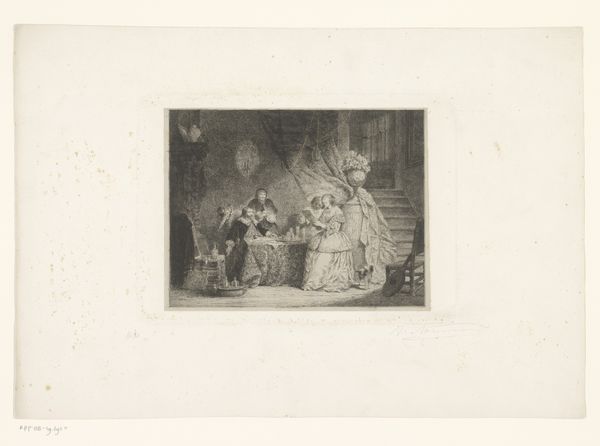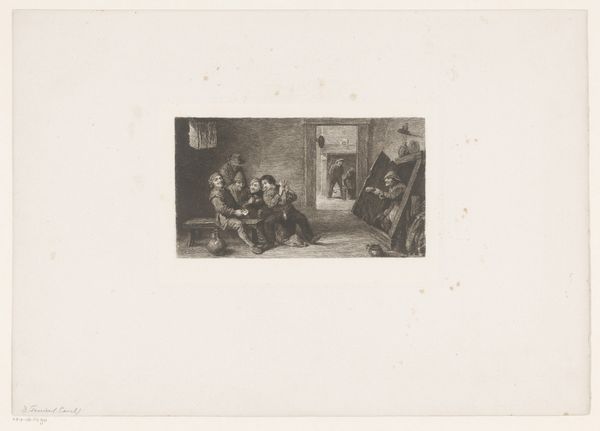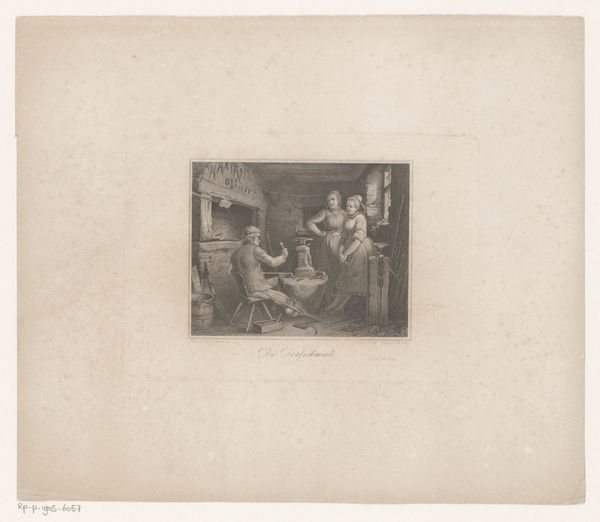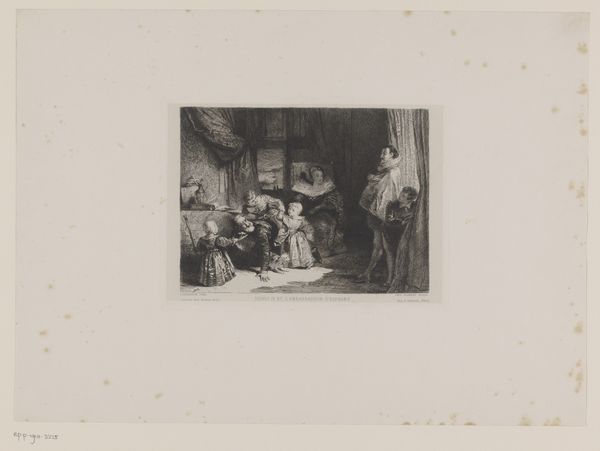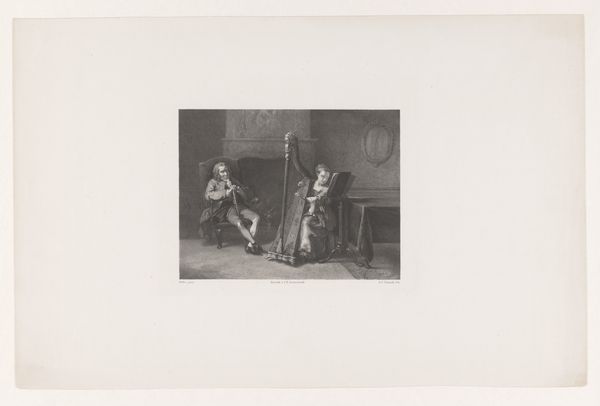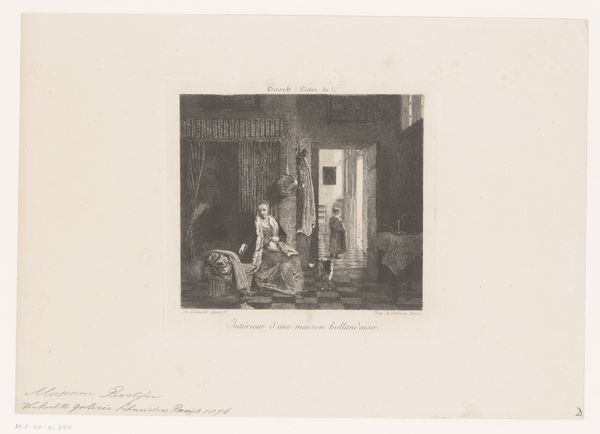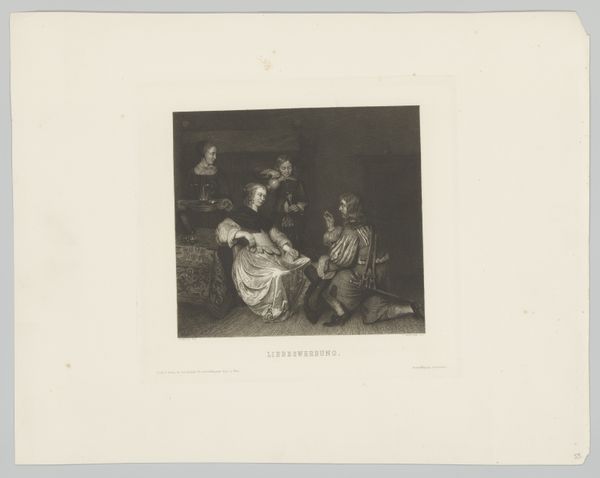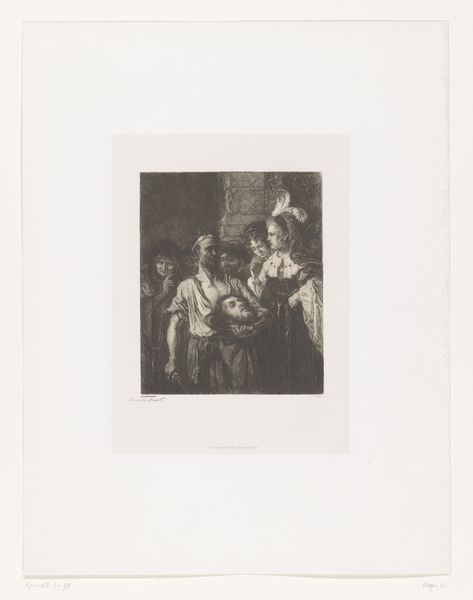
#
photo of handprinted image
#
shape in negative space
#
light pencil work
#
wedding photograph
#
natural tone
#
pencil drawing
#
white focal point
#
tonal art
#
remaining negative space
#
positive shape
Dimensions: height 152 mm, width 214 mm
Copyright: Rijks Museum: Open Domain
Charles Billoin made this print, 'Seller of Rosaries', sometime in the mid-19th century, using etching and engraving techniques. It depicts a group of figures, seemingly bourgeois, in conversation with a woman dressed in black, perhaps a nun, who is selling them rosaries. The image is interesting because it speaks to the peculiar position of the Catholic Church in 19th-century Europe. While the Enlightenment was in full swing, and secularism was on the rise, religion still exerted a powerful influence on the daily lives of many people. The print suggests the ways in which religion could be both a source of comfort and a commodity to be bought and sold. Rosaries were a readily marketable good, but the people who used them also engaged with the deeper history of the church. To better understand an image like this, we need to look into sources from the period, such as newspaper articles, pamphlets, and religious texts. These sources can shed light on the social and institutional contexts in which the artwork was made and viewed.
Comments
No comments
Be the first to comment and join the conversation on the ultimate creative platform.
